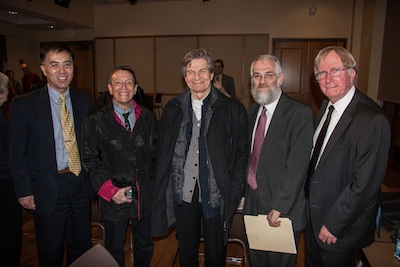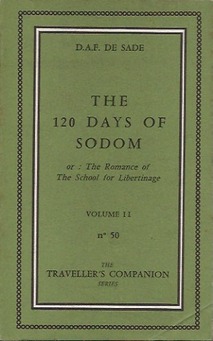 I’m Baaaaaaaaaaack!
I’m Baaaaaaaaaaack!
A gradual, month-long computer meltdown that began in mid-January forced me to put this blog on hold in order to concentrate on matters technological and close to home. Making a very long story short, I ended up buying a low-end desktop Mac Mini to serve as my main computer, relegating my beloved MacBook Pro to the role of backup computer and road companion on my increasingly infrequent travels.
Because I back up my hard drive regularly, and have also cloned my hard drive, I lost no data. But it seemed advisable to do clean installs of my applications, while also transferring my data carefully and reviewing it to salvage anything damaged during the month of crashes. A tedious process, though it has resulted in a stripped-down instrument free of bloat.

Mac Mini
Just shy of of 8 inches square and slightly over an inch high, the Mini sits unobtrusively on my desk, its exterior giving no hint of its power. (My wife Anna says it looks more like a purse than a computer.) I’ve added two external monitors ― one 22″ and the other 19″ — to the Mini. This has transformed my visual environment; after 13 years of squinting at a laptop screen, it feels like moving from a studio apartment into a loft. All this space!
Augmenting the novelty, the Mac Mini came loaded with Apple’s current OS, Mountain Lion. I hadn’t upgraded the MacBook Pro from Snow Leopard, leaving me two iterations behind. Hence I’m accommodating to a number of revisions, some of them drastic, to the location and operation of assorted features and components.
In short, I’ve found myself rudely and unwillingly thrust into a radically revamped workspace, and forced to use a considerably revised toolkit to boot. Periodically, as readers of this blog will recall, I grouse about the computer industry’s relentless reconfiguration of hardware and software, with the consequent imposition of top-down changes, often substantial and not infrequently unwelcome.

ADC with ViewSonic Monitor. Photo © copyright 2013 by Anna Lung.
I think of myself as a creature of habit, from time to time muttering grumpily what my late colleague Richard Kirstel used to announce: “All change is for the worse.” Yet, in grappling with this situation, I’ve watched myself adapt with relative ease to these new ways of thinking and acting. (Certain physiological habits, such as keystroke combinations for shortcuts, took a month to fade away as their replacements became customary.) Fortunately, Mountain Lion deletes no features on which I relied heavily or found essential to my workflow. And it certainly adds some intriguing possibilities, among them Dictation, a built-in system-wide speech-to-text function that looks extremely promising.
This leads me to consider the possibility that, pace Kirstel, my brain does manage to wrap itself around these evolutionary shifts in digital technology without extreme difficulty. Which in turn suggests that perhaps this recurrent process helps to keep my brain active and young (or, more precisely, youth-like) by pushing me to learn new skills, to replace old habits with new or revised ones, and in one way or another to get some exercise for the mind. In short, I’ve begun to weigh the mental-health benefits of living la vida digital, with its steady reconfiguring of my neural pathways.
Meanwhile, I’m in the saddle once again, ready now to ride this blog through 2013 and beyond.
Liu Xia in Richmond, VA
This computer crisis came (don’t they always?) at an extremely inconvenient time ― in the midst of preparing a lecture and Keynote presentation for the opening of the exhibition “The Silent Strength of Liu Xia” at the University of Richmond Museums in Virginia on February 28. I bought the Mac Mini primarily because I couldn’t wait 3-5 days for repair of my MacBook Pro, with that deadline breathing down my neck. It all worked out, though I left for Richmond on February 27 with nothing more than a thumb drive in my pocket on which I’d saved the text of my lecture and the Keynote slideshow ― first time I’ve traveled to a professional event without my laptop in well over a decade. (I put off repair of the MacBook Pro until after I returned.) Felt naked.
The director of the University of Richmond Museums, Richard Waller, did a fine installation of the images in the Lora Robins Gallery, using new digital prints made there especially for the occasion. They also published a small, handsome catalogue to go with it. The lecture and a subsequent panel drew an overflow crowd, and went well. (Click here for a PDF of my lecture.) The museum recorded these events, and they’ve posted at YouTube the video of my lecture, “Freedom Reflex: The Photographs of Liu Xia,” plus the panel discussion that followed with myself, political economist Guy Sorman, retired U.S. Ambassador Randolph Marshall Bell (president of the First Freedom Center), and Prof. Vincent Wang, Associate Dean of the School of Arts and Sciences and Professor of Political Science, University of Richmond. (If the video doesn’t show below, refresh this page in your browser or click here.)
With these public presentations I concluded my year-long involvement with the international tour of this show, which I served primarily as tour manager and trouble-shooter, while also adding a curatorial essay to the accompanying writings by various authors. Liu Xia has been much in the news these past months; given the recent regime change in Beijing, the controversy surrounding her situation, and the uncertainty of her fate at the hands of China’s new rulers, it’s unclear whether the tour will continue. In any event, that’s out of my hands. It’s been an honor to work on her behalf; I hope that she and her husband, the imprisoned 2010 Nobel Peace Prize awardee Liu Xiaobo, are freed and reunited soon.
I will continue to maintain, enhance, and update the website devoted to Liu Xia’s work that I designed and published a year ago. It’s become the most substantial online English-language source of information about her art and her situation, so it will remain available until further notice. If the exhibition’s tour does extend past Richmond, you’ll find news about it there.

Liu Xia opening, Richmond, VA, 2-28-13. L-R: Vincent Wang, A. D. Coleman, Guy Sorman, Richard Waller, Randolph Marshall Bell. Photo © copyright 2013 by Taylor Dabney.
A Tale of Two Scrolls

Jack Kerouac, scroll of On the Road. Photo used courtesy of a Creative Commons license from Thomas Hawk.
I didn’t know it when I posted my meditation on Jack Kerouac’s typewritten 120-foot “scroll” of his 1957 novel On the Road, but the Dharma Bum had a literary precursor in employing that physical format for a novel ― none other than the Marquis De Sade. Sade wrote his infamous 120 Days of Sodom over a 37-day stretch in 1785, inscribing it in minute characters on both sides of a 39-foot-long roll of paper while imprisoned in the Bastille during the French Revolution. (According to one person who viewed it, it was “impossible to read without a magnifying glass as the writing was so tiny.”)
Sade, transferred to an insane asylum just days before the storming of the Bastille on July 14, 1789, feared it had been lost or destroyed during. But, hidden in a crack in his cell, it survived and was eventually retrieved in 1832, though not published (in German) until 1904.
For someone writing by hand, starting a new page doesn’t constitute the same interruption of flow as inserting a new sheet into a typewriter. Sade’s use of a roll of paper wasn’t technologically innovative, as I argued Kerouac’s was in 1951. Still, both authors created their scrolls by pasting together loose sheets of paper. And both produced these particular works in short, concentrated periods of time, working at white heat. Something about that continuous unreeling of prose seems consonant with the urgency of their separate narratives.
Maurice Girodias of Olympia Press in Paris published the first English translation of 120 Days of Sodom in 1957, translated by Austryn Wainhouse (under the pseudonym Pieralessandro Casavini), with an introduction by Georges Bataille. It seems improbable that Kerouac would have had access to that edition in time for it to influence him, more likely that he could have read a French edition. (Kerouac, of French-Canadian descent, spoke and read that language.)
But it’s not Sade’s narrative or literary style that connects the two works; it’s the idea of the scroll as a workspace. Sade’s notoriety certainly preceded the Olympia Press publication of 120 Days of Sodom; he had already become legendary in European and American avant-garde literary circles. The story of this book’s creation on a scroll had circulated widely enough that Kerouac had almost certainly encountered it.
In any case, cross-pollination or not, there’s a definite resonance to the fact that, in 1957, two revolutionary books drafted on scrolls 166 years apart achieved their first publication in English.
Sade’s scroll has made headlines lately, due to a bid by La Bibliothèque Nationale de France, that country’s national library, to repatriate the work, smuggled by a thief into Switzerland in 1982 and sold there to a private collector. Currently it’s in the holdings of the Fondation Martin Bodmer, a Swiss cultural foundation. The French consider it a “national treasure” and “part of our cultural heritage,” according to Bruno Racine, director of the Bibliothèque Nationale; the library wants to acquire it in time for the celebration of the 200th anniversary of Sade’s death next year.
In this book, as in his other works, Sade wrote scathingly about debauchery within the Catholic Church. The bicentennial festivities planned in France will coincide with mounting global scandals over widespread sexual abuse by Catholic clergy. On that subject, it would appear, Sade was right on the money.
•
This post supported by a donation from the Estate of Lyle Bongé.









HI Allan: I just enjoyed your latest blog.
A disturbing and amusing piece in today’s NYT (Sunday). It’s in the Sunday Styles section page 18. Now that the news of the week in review now contains nothing but banal opinion pieces I skip right to the trivia and hunt for inter-racial gay marriage announcements. But what caught my eye today are 2 pieces on the changed nature of wedding photography. Today everyone is a wedding photographer. I wonder if the glass-plate view camera people had a similar experience when roll film was introduced circa 1890.
I just read your piece on Minor White in my newly purchased copy of Critical Focus. Excellent. I liked the way you dealt with the question of whether to preserve his “sequences” in the show.
David
Yes, more and more people are dispensing with the conventional wedding photographer and/or augmenting that functionary by encouraging attendees to send in their own digital pix, distributing one-time-use point & shoot analog cams, etc. Here’s a link to the Times piece. And a link to the second piece.
At the same time, business is apparently booming for professional vacation photographers ― who will document your casual, private experience. See “Don’t Forget to Pack a Photographer” at the Wall Street Journal, July 5, 2012.
There’s also a booming market for digital photo booths available for rental at weddings and other events. I’ve seen a bunch of these at the tech expos I attend. Here’s a link to one, ShutterBooth.
So we’re turning the documentation of our nuptials and other formal events over to amateurs, while professionalizing the production of our vacation pix. Go ask.